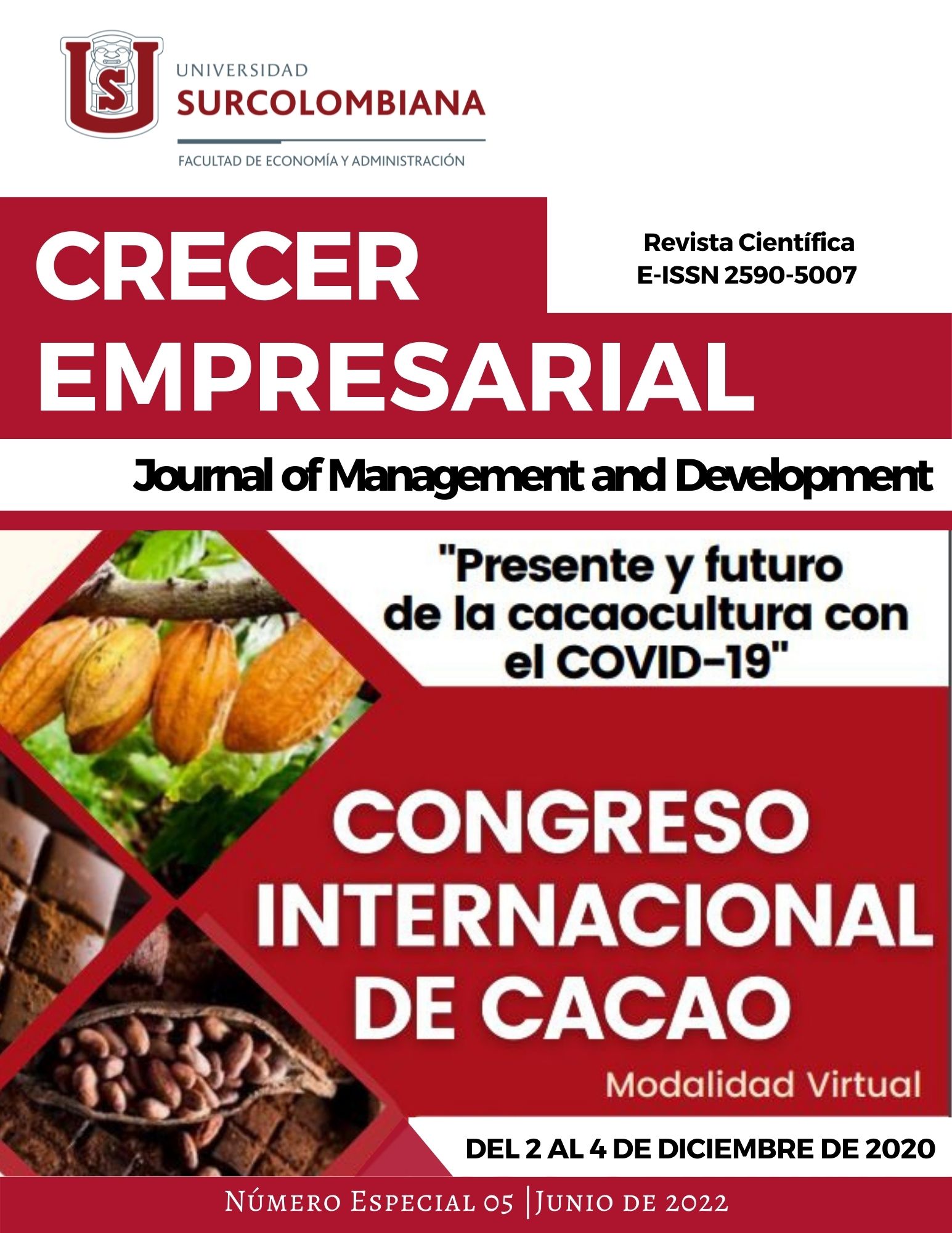Impact of the bean index of three regional cocoa clones on productive yield
##plugins.themes.bootstrap3.article.main##
In this work, physical characteristics of the cocoa bean of great importance from the point of view of productivity and yield at the time of processing have been evaluated, such as bean index and percentage of the shell. The analyses were carried out from March to June during the months of the COVID -19 pandemic. In Colombia, the region with the highest cocoa production is the so-called Santandereana mountain, which is located between the warm and temperate thermal floors where cocoa is grown between 200 and 1200 meters above sea level in the departments of Santander and Norte de Santander. The monitoring and analysis of the two variables were recorded in the 2019 main harvest for the FSV41 clones, the FEAR 5, the FLE 2, and as a reference, the CCN51, the bean index, and the percentage of husk were determined according to the established methodology, having as a result that the evaluated clones have a medium bean index and a medium husk percentage.
Downloads
##plugins.themes.bootstrap3.article.details##
J. C. Motamayor, a M. Risterucci, P. a Lopez, C. F. Ortiz, a Moreno, and C. Lanaud, “Cacao domestication I: the origin of the cacao cultivated by the Mayas.,” Heredity (Edinb)., vol. 89, no. 5, pp. 380–386, 2002, doi: 10.1038/sj.hdy.6800156.
N. Badrie, F. Bekele, E. Sikora, and M. Sikora, “Cocoa Agronomy, Quality, Nutritional, and Health Aspects,” Crit. Rev. Food Sci. Nutr., vol. 55, no. 5, pp. 620–659, 2015, doi: 10.1080/10408398.2012.669428.
W. Phillips-Mora, A. Arciniegas-Leal, A. Mata-Quirós, and J. Motamayor-Arias, Catálogo de clones de cacao seleccionados por el CATIE para siembras comerciales. 2012.
“NORMA TÉCNICA NTC COLOMBIANA 1252,” 2012.
L. F. Q. F. S. G. Castelblanco, Guerrero, and A. G. J. & N. Martínez, “Caracterización de tres índices de cosecha de cacao de los clones CCN51, ICS60 e ICS 95, en la montaña santandereana, Colombia santandereana mountain , Colombia,” Rev. Investig. Agrar. y Ambient., vol. Volumen 6, pp. 253–266, 2015.
ADM Cocoa, “De Zaan Cocoa & Chocolate Manual,” Manual, pp. 1–171, 2009.
C. Steverson, J. Corven, and G. Villanueva, “Manual para analisis de cacao en laboratorio.” 1993.
R. F. Schwan and A. E. Wheals, “The microbiology of cocoa fermentation and its role in chocolate quality.,” Crit. Rev. Food Sci. Nutr., vol. 44, no. 4, pp. 205–221, 2004, doi: 10.1080/10408690490464104.
L. Arias, P. Diaz, and L. Pozzo, “Estudio preliminar de propiedades fisicoquímicas y sensoriales de mieles florales del Delta medio e inferior del Río Paraná como herramienta para su caracterización,” 2019.
“Cacao en Grano Requisitos de Calidad de la Industria Apr 2016_es.”
Q. Edición, “Guía Técnica para el Cultivo del CACAO,” 2012. [Online]. Available: www.fedecacao.com.co.
N. C. Ramos, “Estación Experimental Santa Catalina. INIAP,” Iniap, vol. 12, p. 10, 2008, doi: 10.1017/CBO9781107415324.004.
L. F. Quintana Fuentes, A. García Jerez, and E. Moreno Martínez, “Perfil sensorial de cuatro modelos de siembra de cacao en Colombia,” Entramado, vol. 14, no. 2, pp. 256–268, 2018, doi: 10.18041/1900-3803/entramado.2.4756.
Q. F. Lucas, G. C. Salomón, G. J. Alberto, and M. Nubia, “Perfil sensorial del Genotipode cacao ( Theobroma cacao L .) CCN51 ( primera cosecha de 2015 ),” vol. 51, no. 1, pp. 60–65, 2015.



